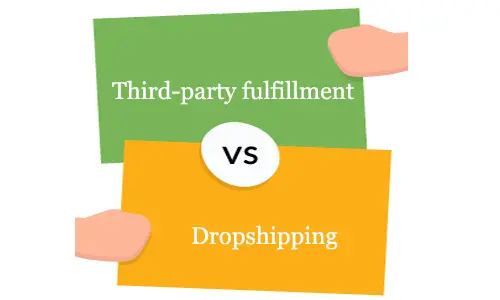Third-Party Fulfillment vs. Drop Shipping Logistics Strategy
Third-party fulfillment and drop shipping are both logistics models, each with its own set of advantages depending on the specific needs and goals of a business.
Table of Contents
What Is Dropshipping?
Dropshipping is a retail fulfillment method where a store doesn't keep the products it sells in stock. Instead, when a store sells a product, it purchases the item from a third party and has it shipped directly to the customer. As a result, the merchant never sees or handles the product.
While dropshipping offers certain advantages, such as low upfront costs and flexibility, it also has challenges, including lower profit margins per sale and less control over inventory and fulfillment processes. Success in dropshipping often relies on effective marketing, finding reliable suppliers, and providing excellent customer service.
What Is Third-party fulfillment?
Third-party fulfillment, also known as 3PL (Third-Party Logistics) fulfillment, is a logistics and supply chain management model where a business outsources its order fulfillment processes to a third-party service provider. In this arrangement, the third-party fulfillment provider takes care of various aspects of the supply chain, including receiving, storing, picking, packing, and shipping orders on behalf of the business.
Third-party fulfillment is a strategic approach for businesses to streamline their supply chain operations, reduce operational overhead, and enhance overall efficiency in delivering products to customers. It's a popular choice, especially among e-commerce businesses seeking to leverage the expertise and infrastructure of specialized fulfillment providers.
Third-party distribution means that an enterprise outsources its distribution business to a professional third-party logistics company, which is responsible for the transportation, warehousing, distribution and other services of goods.
Its service targets are enterprises, helping enterprises to improve logistics efficiency, reduce costs and improve customer satisfaction. Its service process includes order processing, cargo packaging, transportation, warehousing, distribution and other links, and the third-party logistics company is responsible for the entire process.
Dropshipping refers to a sales model provided by suppliers to distributors. Distributors do not need to bear the risks of inventory and delivery during the sales process. They only need to submit the order information to the supplier, who is responsible for delivering the goods. and delivery.
Its service targets are distributors, helping them reduce inventory risks, reduce capital investment, and improve sales efficiency. Its service process is that distributors submit order information to suppliers, and suppliers are responsible for shipment and distribution, without distributors. participate.
Advantages of third-party fulfillment and drop shipping:

Third-Party Fulfillment
- Bulk Ordering Discounts
Businesses can benefit from bulk ordering discounts when using third-party fulfillment, as the fulfillment center can optimize and negotiate better shipping rates.
- Scalability
Third-party fulfillment is highly scalable, allowing businesses to easily adapt to changing order volumes, seasonal fluctuations, and overall growth.
- Dedicated Storage and Inventory Control
Businesses utilizing third-party fulfillment have dedicated storage for their products, allowing for better inventory control, organization, and management.
- Efficient Order Processing
Fulfillment centers are equipped with technology and processes that can lead to faster and more efficient order processing compared to manual handling.
- Value-Added Services
Many fulfillment centers offer value-added services like kitting, customization, and quality control, providing additional benefits for businesses.
Drop Shipping
- Low Initial Investment
Drop shipping requires minimal upfront investment as businesses do not need to purchase and store inventory. This makes it an attractive option for startups or businesses with limited capital.
- Reduced Operational Complexity
Drop shipping eliminates the need for businesses to handle the logistics of storing and shipping products. This simplicity can be advantageous, especially for small businesses.
- Wide Product Range
Businesses can offer a wide range of products without the need to invest in stocking inventory. This flexibility allows for testing and expanding product offerings.
- Global Reach
Drop shipping enables businesses to reach a global audience without the need for establishing physical distribution centers in different regions.
- Lower Risk
Since businesses only purchase products from suppliers after a customer places an order, there is less risk associated with holding excess inventory that may not sell.
Overall Considerations:
Control and Branding
Third-party fulfillment provides more control over inventory and branding. With drop shipping, businesses may have less control over product availability and shipping times.
Shipping Costs
Drop shipping may have higher per-unit shipping costs, as products are often shipped individually. Third-party fulfillment can optimize shipping costs for bulk orders.
Customer Experience
Third-party fulfillment allows for more control over the customer experience, as businesses can manage packaging, branding, and order tracking. Drop shipping may result in less control over these aspects.
In summary, the choice between third-party fulfillment and drop shipping depends on factors such as business size, capital, control preferences, and the nature of the products being sold. Larger businesses with a need for more control over inventory may lean towards third-party fulfillment, while smaller businesses looking for a low-risk and low-investment model may find drop shipping advantageous. Ultimately, the best choice depends on the specific goals and circumstances of the business.





